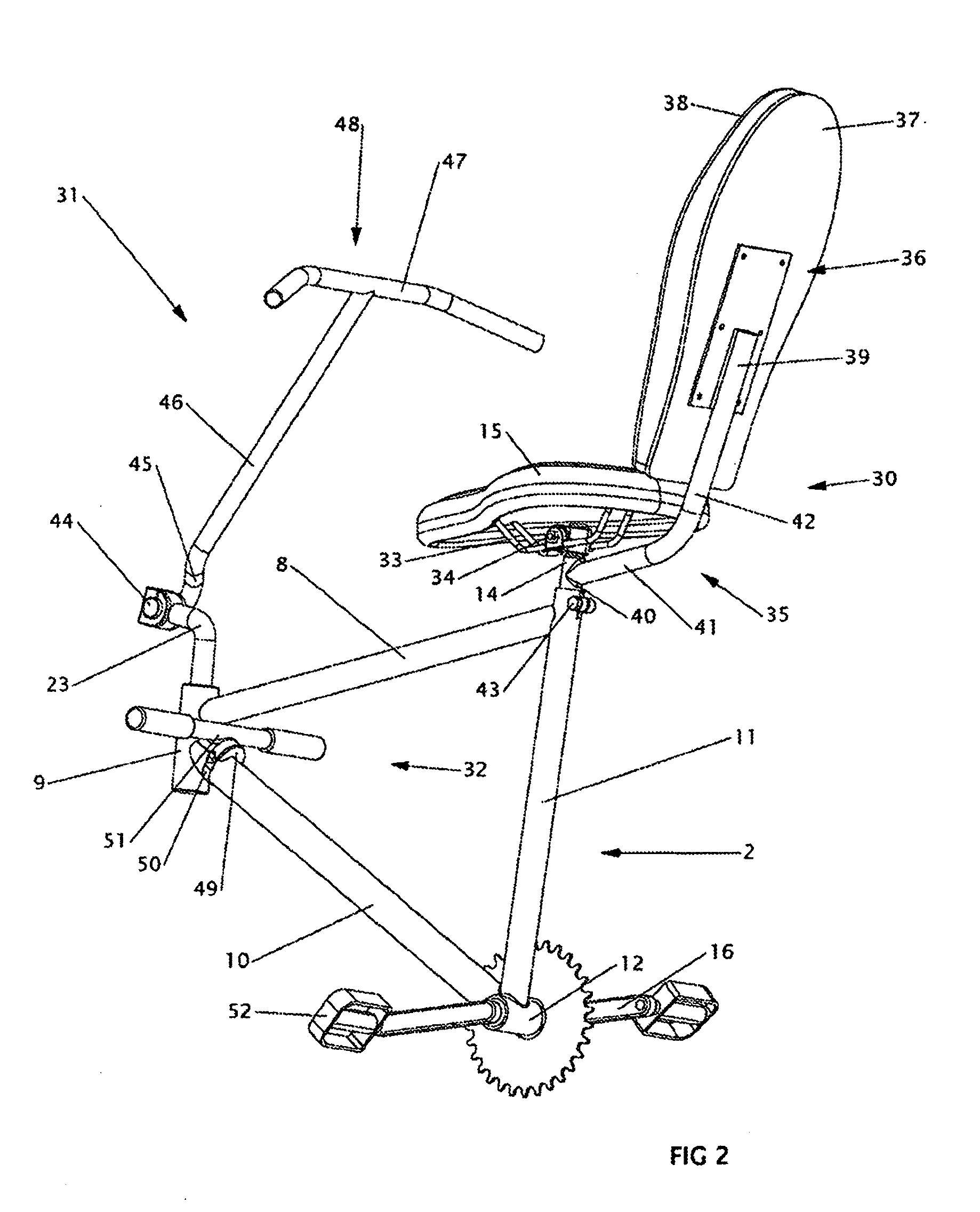Dual-posture electric assist bicycle
a dual-posture, electric assist bicycle technology, applied in the direction of bicycles, motorcycling, cycles, etc., to achieve the effect of reducing the impact of electric assist bicycle handling characteristics, and facilitating rolling around and parking
- Summary
- Abstract
- Description
- Claims
- Application Information
AI Technical Summary
Benefits of technology
Problems solved by technology
Method used
Image
Examples
Embodiment Construction
[0075]FIG. 1, illustrates a typical fully suspended “mountain bike” style of bicycle 1 that is well suited for conversion to a dual posture EAB using the kit embodiment of the present invention. Its particular suitability is due to the mountain bike's more robust construction being better able to withstanding the extra speed induced stresses and internal drivetrain forces inherent to retrofitting an electric, pedal-assist propulsion system. This particular mountain bike has optional front and rear suspension units which render it more comfortable when used over rough terrain however virtually any conventional bicycle can be successfully retrofitted with the present invention, regardless of whether it's a suspension-framed “mountain bike” or a rigid framed “road bike”
[0076]Typical “donor” bicycle 1 is comprised of triangular frame 2, front wheel assembly 3, rear wheel assembly 4, pedal propulsion drive assembly 5, control assembly 6 and seating assembly 7. Triangular frame 2 is compr...
PUM
 Login to View More
Login to View More Abstract
Description
Claims
Application Information
 Login to View More
Login to View More - R&D
- Intellectual Property
- Life Sciences
- Materials
- Tech Scout
- Unparalleled Data Quality
- Higher Quality Content
- 60% Fewer Hallucinations
Browse by: Latest US Patents, China's latest patents, Technical Efficacy Thesaurus, Application Domain, Technology Topic, Popular Technical Reports.
© 2025 PatSnap. All rights reserved.Legal|Privacy policy|Modern Slavery Act Transparency Statement|Sitemap|About US| Contact US: help@patsnap.com



